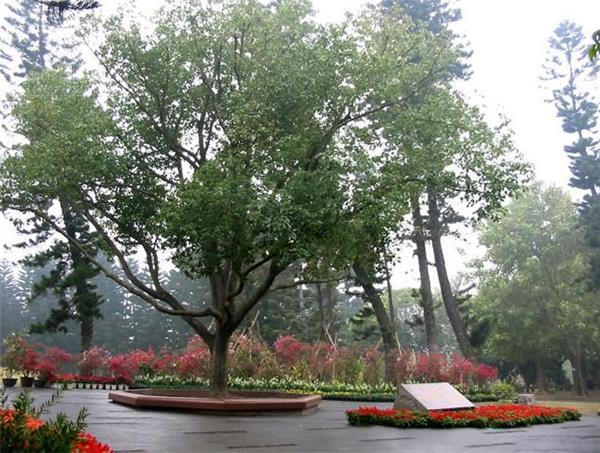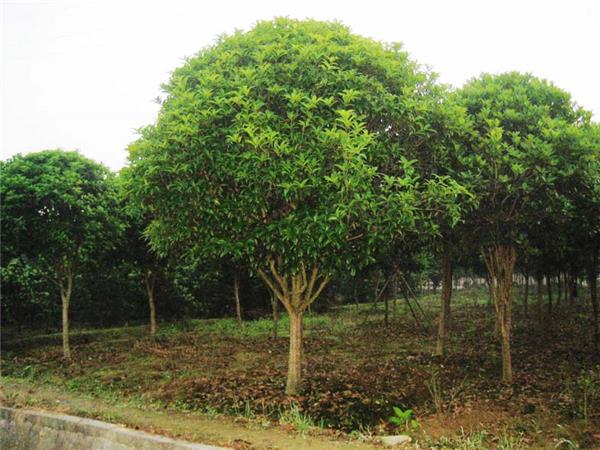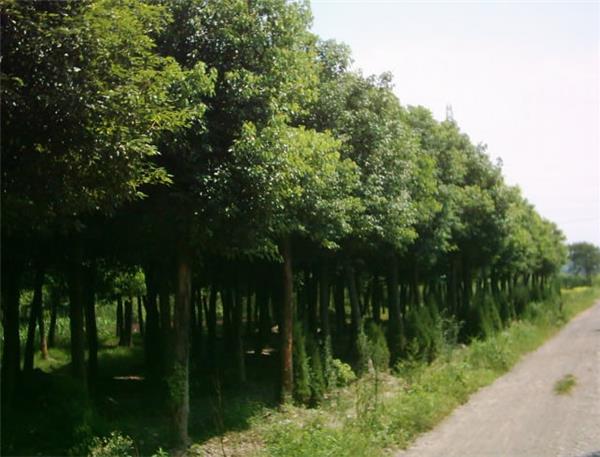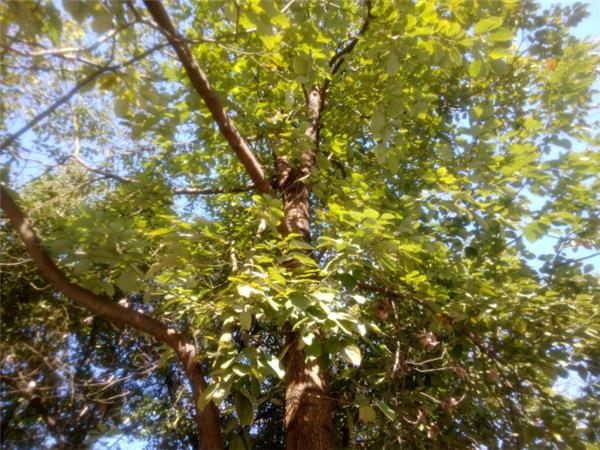Morphological characteristics of Cinnamomum camphora what is the difference between Cinnamomum camphora and Cinnamomum camphora
Like most camphor trees, Cinnamomum camphora has more tenacious vitality and adaptability, so it is a kind of tree species that novice gardeners can also try to cultivate. Also, although Cinnamomum camphora and Cinnamomum camphora are similar in appearance, there is still a difference between them.

1. Morphological characteristics of Cinnamomum camphora.
Trees, 8-12m tall. Branchlets whorled or subwhorled, densely rust-colored tomentose when young; terminal bud ovate, scales outside rust-colored pubescent. Leaves 3-5 subwhorled; petiole 1-1.5cm long, densely rust-colored tomentose; leaf blade oblong-lanceolate, oblong-elliptic or lanceolate, 10-17cm long, 3-6cm wide, apex subcaudate-acuminate or acute, base cuneate, leathery, young leaves densely rusty tomentose on both surfaces, then hairs gradually deciduous, only basal midrib pilose above, pilose along veins below, the rest glabrous when old. Umbels clustered in leaf axils or branches; flowers unisexual, dioecious; male tepals 4, ovate, outer and margin densely rust-colored villous, inner base villous; fertile stamens 6, exserted, filament base villous, pistil glabrous, style slender Female perianth striate or ovate-lanceolate, staminodes pilose at base, ovary ovoid, glabrous or sparsely pilose, style pilose, stigma peltate, 2-lobed. Fruit globose, 8-10mm in diam.; receptacle flattened, 2-3mm in diameter, margin often with perianth segments, fruiting pedicel ca. 7mm, pilose. The florescence is from October to December, and the fruit maturity is from July to August in the following year.

Second, the difference between Cinnamomum camphora and Cinnamomum camphora.
1. Cinnamomum camphora is an evergreen tree belonging to Lauraceae. Generally up to 50 meters high, is a good landscaping material, at the beginning of growth, its bark is generally green, its surface is very smooth. But in old age, the bark slowly changes from green to yellowish brown, and cracks begin to appear on the surface. The bark of Cinnamomum camphora is always yellowish brown or grayish brown, with irregular longitudinal cracks.
two。 Cinnamomum camphora is first of all literally easy to know that its leaves are relatively large, which is one of the differences between it and other camphor trees.
3. Another obvious difference is the color of flowers. Camphor flowers show yellowish green, but camphor leaves are purple-black when they mature. This contrasting color is another way to distinguish them.

3. Cultivation techniques of Cinnamomum camphora
Sowing: strip sowing is suitable, strip spacing 15-20cm, deep trench 1.5-2.0cm, width 3-4cm, sowing 40-50 seeds per meter in sowing ditch (if you want to "transplant tender seedlings", you can use sowing). Cover with fire, thickness 1-2cm, use 50% shading net to build shade, and sprinkle water once a day in the morning and evening. The true leaves of 3-4 pairs of seedlings are cultivated in separate beds or moving nutrition bags, and the management is strengthened according to the specifications of the nursery. The height of 1-year-old seedlings is 50-80cm, which can be planted out of the nursery. During the growth period, it can branch in time, protect the top growth advantage, fine management, sufficient water and fertilizer, and the seedling height can reach 50-75 cm.
Transplanting: transplanting with soil balls when coming out of the nursery, and re-cutting large seedlings to reduce transpiration. In areas with cold weather, planting should pay attention to preventing the cold and overwintering. Before the cold liquid comes, the cadres should be painted white, poured through frozen water, and the dry base should be cultivated for 20-30 meters. Then the trunk of the young trees should be bound with straw and released in spring. The saplings of the north introduced from the south should be carefully managed continuously for 3-4 years. After adapting to the local climate, the cadres will no longer need to be protected against cold in winter.
Management: in order to cultivate strong seedlings, a series of seedling tending work should be carried out in time, such as ploughing, weeding, irrigation, soil cultivation, pest control, disease control and so on. If conditions permit, root cutting or tender seedling transplantation should also be done at the seedling stage.

Cinnamomum camphora has high ornamental value and is often used in various garden designs. It is also a kind of plant very suitable for planting in the courtyard. It can not only beautify the courtyard, but also provide people with shade and shade.
Related
- Wuhan Hospital Iron Tree Blooming Result Was Instantly Frightened by the Gardener Master
- Which variety of camellia is the most fragrant and best? Which one do you like best?
- What is the small blue coat, the breeding methods and matters needing attention of the succulent plant
- Dormancy time and maintenance management of succulent plants during dormancy
- Minas succulent how to raise, Minas succulent plant pictures
- What are the varieties of winter succulent plants
- How to raise succulent plants in twelve rolls? let's take a look at some experience of breeding twelve rolls.
- Attention should be paid to water control for succulent plants during dormant period (winter and summer)
- Watering experience of twelve rolls of succulent plants
- Techniques for fertilizing succulent plants. An article will let you know how to fertilize succulent plants.



